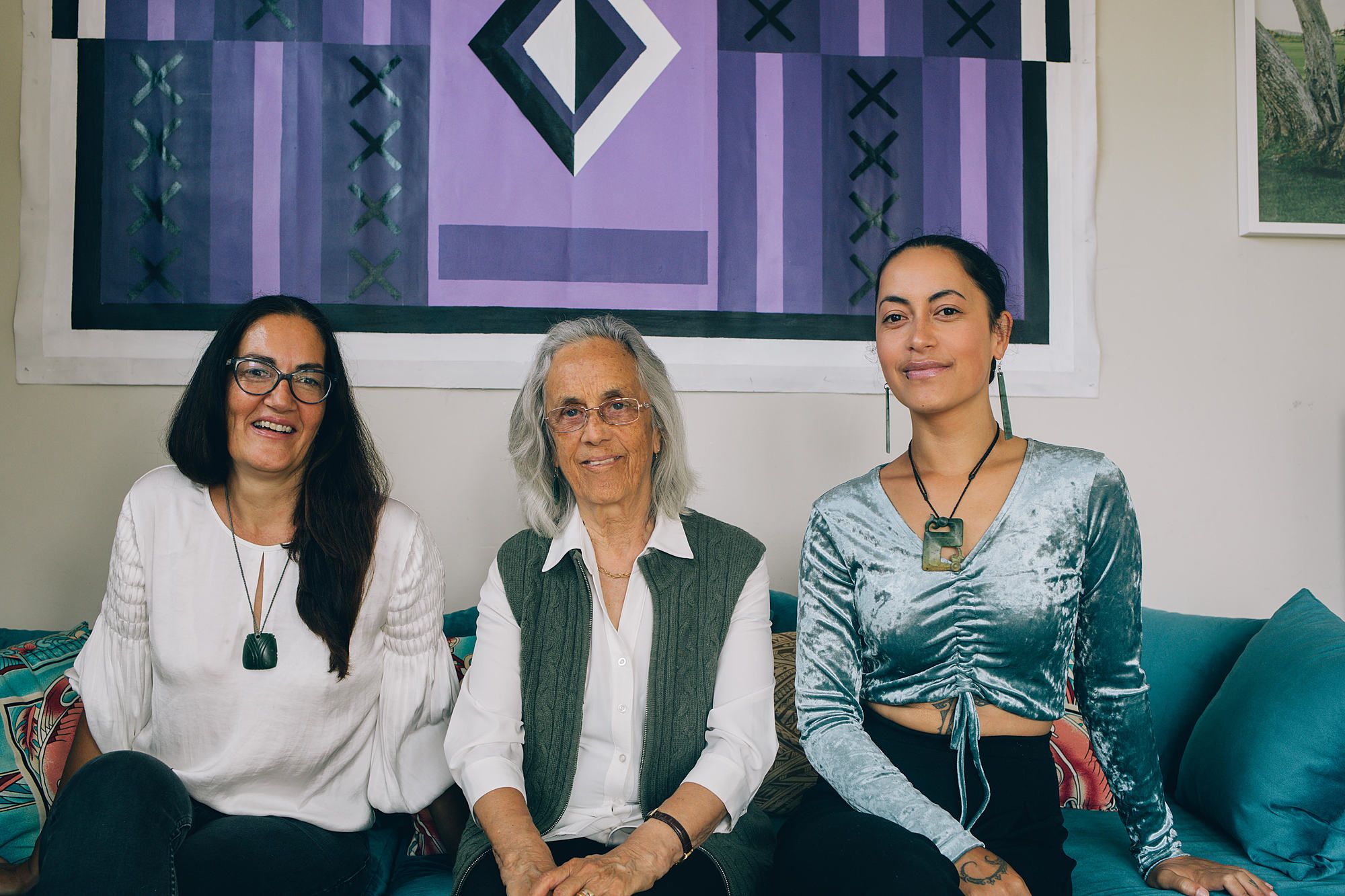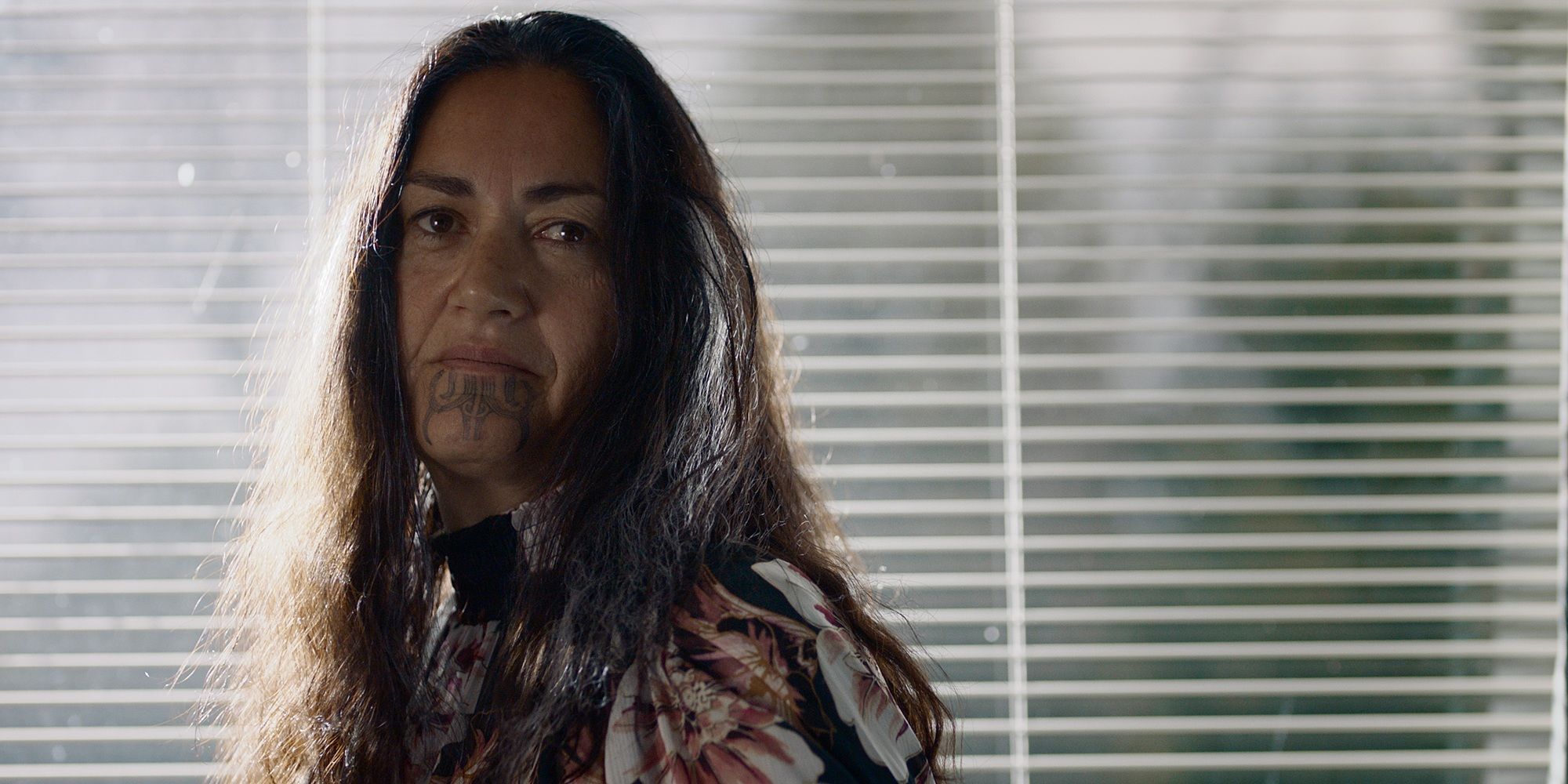Bringing Nana’s Writing to Life
Shilo Kino talks to Briar and Miriama Grace-Smith, co-director and co-art director of the movie Cousins, about story sovereignty and what it’s like having one of the country’s most celebrated writers as your nana.
Why has it taken so long? That's a question I haven't been able to get out of my mind. Cousins is the third feature film in history to be directed by wāhine Māori. The first was Mauri by Merata Mita. That was 32 years ago – before I was even born. The second was Waru in 2017, a feature film made up of eight ten-minute short films written and directed by Māori women filmmakers. I have spent the last ten years telling stories as a writer and journalist, doing my best to decolonise the space I am in, while at the same time advocating for sovereignty over our stories. As Māori, we need more of our stories told, but more importantly, we need to be telling our own stories.
When I first saw the Cousins trailer up on my Instagram, I was moved to tears. It was such a poignant and emotional two minutes, and it was the first time I had seen a movie with three beautiful wāhine Māori as the leads. Looking at the high engagement, views and comments from many others, I wasn't the only one who felt this way. So why has it taken so long, when the audience is there and hungry for these stories?
After watching the trailer, I messaged Miriama Grace-Smith. She is the talented wahine who illustrated the cover of my book The Pōrangi Boy and co-art director of Cousins. I soon found out her mum, Briar Grace-Smith, was the co-director, writer and actor, and her nana was Patricia Grace. What a cross-generation of wāhine toa! I knew I had to talk to her and her mum, so I arranged an interview over Zoom, and we connected. And the first pātai I had for both of them: Why has it taken so long?
It was unheard-of for Māori women to be directing feature films
"It was kind of unheard-of for Māori women to be writing and directing feature films. And it was on people's psyche that this doesn't happen," Briar shared with me. "Mauri premiered in 1988. Then there was a 30-year drought between that and Waru, which was written and directed by nine Māori women. It's been a struggle for women in general. But for Māori women, it has been harder."
Merata tried for years to turn Cousins, a book written by Patricia Grace in 1992, into a film. But producers weren’t interested – they wanted a Once Were Warriors-type story. The story of Mata, Missy and Makareta was too women driven, too intimate, too real. Three cousins separated by circumstances yet bound together by blood. Almost thirty years later, Cousins has just been released in cinemas nationwide.
Briar has had a successful career in filmmaking, writing, and directing several short films, feature films and TV shows. She was appointed an Officer of the New Zealand Order of Merit in 2018. Her whānau ties to Patricia made adapting Cousins to film that much more meaningful. “I was kind of privy to being in the room a lot with Patricia and Merata while they worked. I would listen to their passion when they talked about it. Merata was so incredibly passionate about the film, but then when she attempted to get it made, that didn't happen.
"I approached Ainsley Gardiner (co-director of Cousins) and I said, ‘Have you ever thought about resurrecting Cousins?’ but I didn't want to write it. I was just terribly scared of taking on that responsibility. And then I said, ‘Are you okay if I write it?’ She replied, ‘You know, I've been waiting for you to say that.’”
She replied, ‘You know, I've been waiting for you to say that"
Briar started writing the screenplay five years ago. “It’s important wāhine Māori tell this story because it comes from a Māori women's worldview. What I understand is that Māori women who watch [Cousins] get something tangible from an authenticity that reaches them on a deep emotional level. And I believe it's something to do with who's telling the story and who's behind the camera. And that's wāhine Māori.”
The beautiful thing about Cousins is the layers within the stories that tell us who we are as Māori wāhine. There’s the strong, outspoken Missy, the smart and sassy Makareta, and the quiet and often misunderstood Mata – their stories shaped within a historical context that tells us how these three women became who they are, and what happens when you take away a person's culture and identity. At times, these women's stories are so confronting because they are so real. It is my story. My mum’s story. These are our stories.
Miriama Grace-Smith always knew she wanted to be an artist – and having a filmmaker as a mum and one of the country's most celebrated writers as your nana, it was hard not to go down the creative route. "Nana is one of those people that I always check ideas with. I ask her what she thinks and she tells me."
“But when I got to high school, the English teacher was always nice to me but I sucked at English. She would ask me to come up and do things like read and ask me about books, and I'm like, ‘Man, I don't know. I don't know much about writing.’ Even now, when people find out they're like, ‘Wow, your nana's Patricia Grace?’”
They're like, ‘Wow, your nana's Patricia Grace?’”
At only 32 years old, Miriama Grace-Smith is establishing her own name and path in the arts as a full-time artist, curator, muralist, illustrator, fashion and costume designer, and art director. And that's the thing, Miriama says, no one else but Māori could tell this story. “There is a lot of stuff that happened throughout the making of the film, it's just kind of explainable. Kind of spiritual… there were just aspects of it that wouldn't have happened if you weren't Māori. Even little things, like in the art department, ‘No that shouldn't be sitting on the table’, that we as Māori just know.”
"What's interesting," Briar continues, "is that the book is told in a very nonlinear way. It jumps from story to story, from the past to the present to the future. And when I was adapting it, you know, I started to think about whaikōrero. The way, you know, people talk in the whare and how they jump in and out of time and space to make a point. And the film, I hope, operates like a whaikōrero." Looking back on it now, I could feel that sense of whaikōrero as the stories of the three wāhine wove in and out of time. At times, it could be considered confusing, but from my perspective as a wahine Māori, it made sense.
Seeing Nana's reaction, her work becoming a film, her characters coming to life
Briar Grace-Smith as Makareta.
The multi-talented wahine is also one of the film's leading actresses, replacing Nancy Brunning, who died just before filming started. Cousins is her first big role. "We auditioned other people, but things weren't quite setting, and I just said to Ainsley, ‘Maybe I should audition.’ And I was joking. About a couple of hours later, Loren Taylor tapped me on the shoulder, picked up a camera and said, ‘I'm here to audition you.’ But in the end, I really had my heart and soul in it."
Cousins has had a huge reaction already. “I think, thankfully, finally, the tides have turned, and people are looking to Māori stories,” Briar says. “Partly because there are more of us telling them. It's becoming part of the norm. I've been making lots of work throughout my life and I've learned to never go on with big expectations, but it's been so warmly embraced, so it sort of makes it all feel like what we did was validated and it's been worth it."
Both Briar and Miriama are already planning their next big projects. Briar is co-writing a comedy series with playwright Victor Rodger and working with comedian Angella Dravid on a feature film. Miriama is working on an animation with Ngāti Toa of wāhine toa in her whānau, and working on five murals in the Porirua CBD with artists Zoe Hall and Gina Kill, as well as illustrating more pukapuka.
And while at the time of writing Patricia hadn’t watched the film yet, she visited the set and loved it.
“She always had a massive grin on her face. Just seeing Nana's reaction to watching it, her work becoming a film, her characters coming to life. That was awesome.”
Photo: Chevron Hassett


